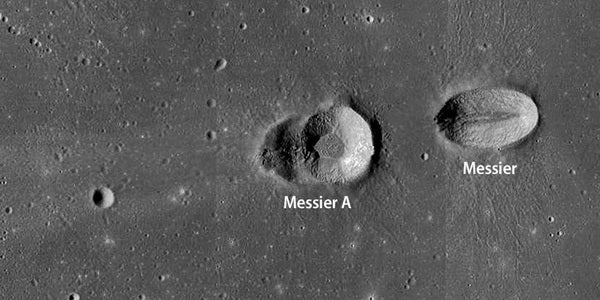Craters made by impacting asteroids or comets, however, are not holes or tunnels “dug” into the ground, but instead result from massive explosions. This is because these bodies strike at tens of kilometers per second, and thus when “stopped” by the ground, they liberate enormous energy. The resulting explosion often creates a crater 10 to 20 times the diameter of the projectile. An explosion generally makes a symmetric (circular) crater, no matter what the shape of the projectile or its angle of impact.
The only exception is if the impact angle is extremely shallow — less than 5° from horizontal. Such a glancing blow also results in an explosion, but while the bottom of the projectile starts to explode when it makes contact with the ground, upper portions may shear off and strike farther downrange, resulting in an elongated crater — or, in exceptional circumstances, a double crater, like Messier and Messier A on the Moon. — Clark Chapman, Southwest Research Institute, Boulder, Colorado










